Back in April/May our lab participated in the National Geographic BioBlitz down in Biscayne Bay. BioBlitz is a 24 hour biodiversity survey (from noon to noon), where we document as many species as possible. Groups of scientists lead groups of science enthusiasts on short forays to see what we can find using various collecting methods. We were involved in both the marine and terrestrial invertebrate surveys. There was a base of operations at Convoy Point, but we were involved with the survey based out of Elliot Key. While the tour groups would come and go throughout both days we the scientists spent two action packed nights camping on Elliot Key. So what does it look like when 12 scientists go camping? Something like this.
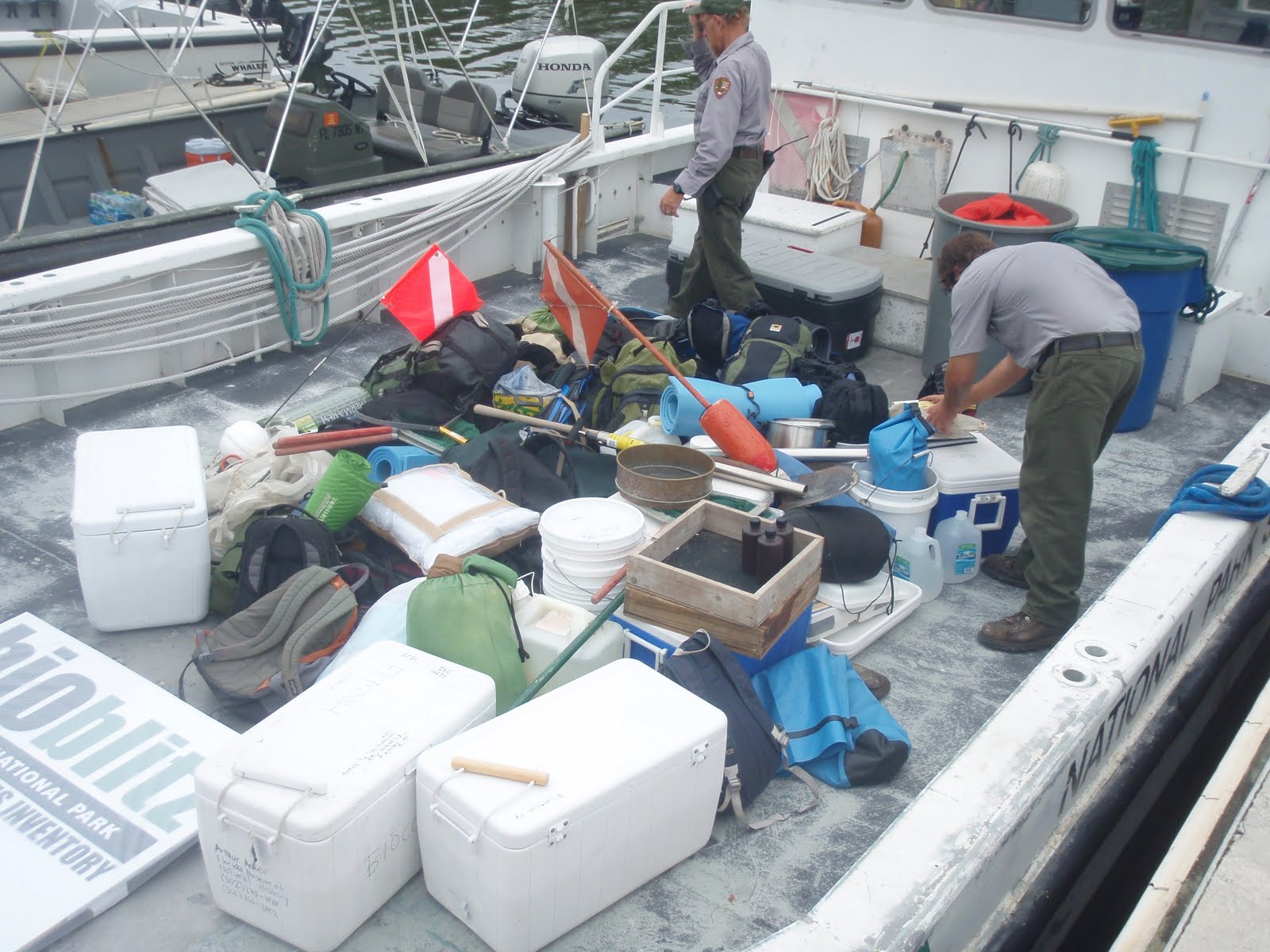
I realize that’s it hard to really grasp the scale of supply-mountain, but we and our gear filled the deck of our the boat that ferried us to the island. And it was all deck. It was a landing-craft designed for transporting vehicles.
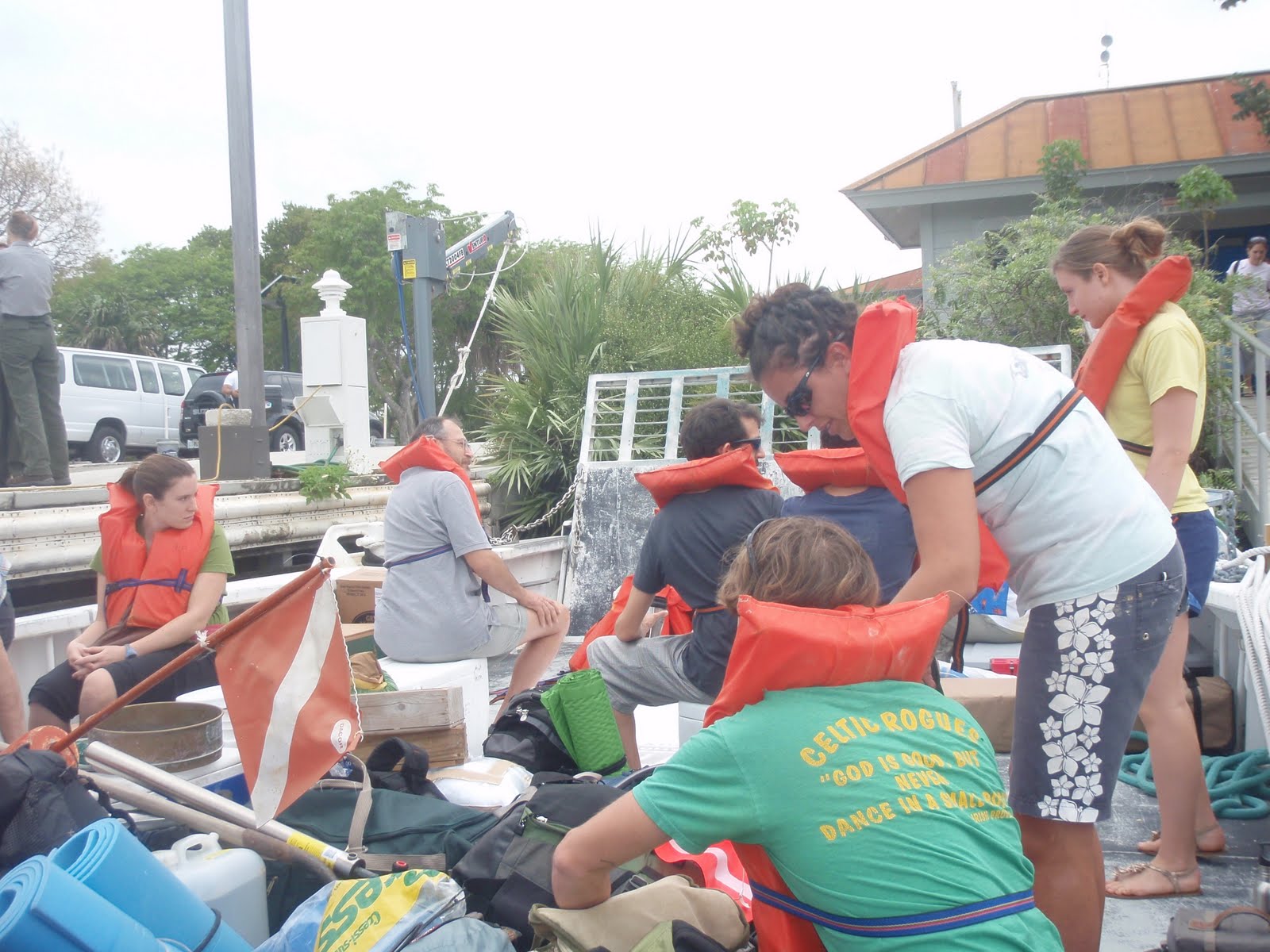
The eating/sciencing portion of the excursion was conducted on one side of the island, and the sleeping portion was conducted on the other. To travel between them one had to go through The Gauntlet.
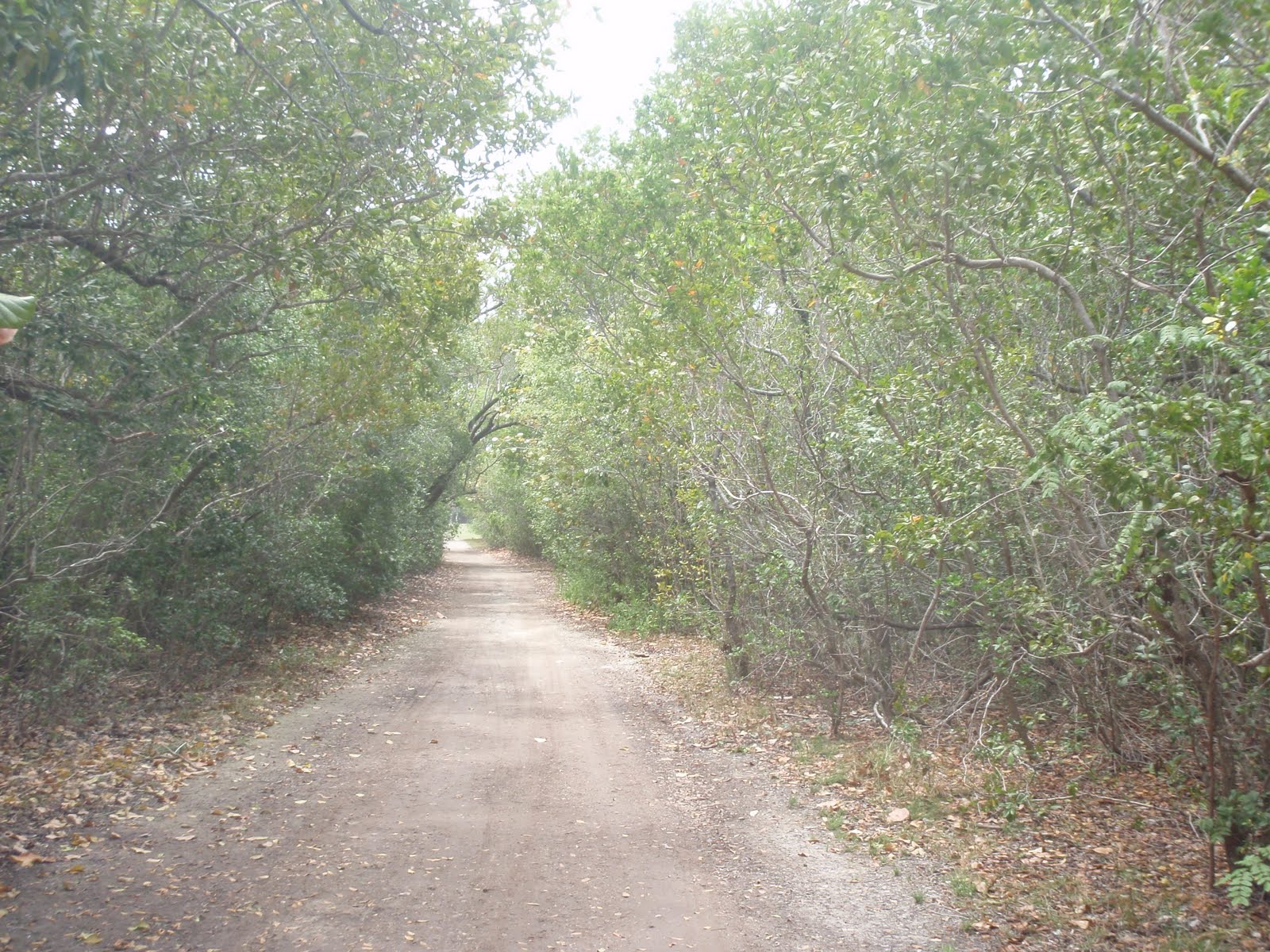
I know, it’s so scenic and tranquil. We too were lulled into a false sense of security, but a few steps into The Guantlet and we realized why the woman on the boat had been so insistent about bug spray.
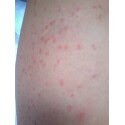
What appears to be a diseased limb swiftly traveling down the road to amputation is actually a buffet of culinary delights from the perspective of the aggressive and bountiful mosquito and no-see-um populations of the island.
So how did we avoid the bugs (besides employing hazardous level of DEET)? By getting in the water! In this picture Jenna and Sam are showing a school group how to use a yabby pump and sieve to collect critters from burrows in the sediment. I realize you can’t see the yabby pump in this picture, but the good news is I’m not holding out for a career in photojournalism.
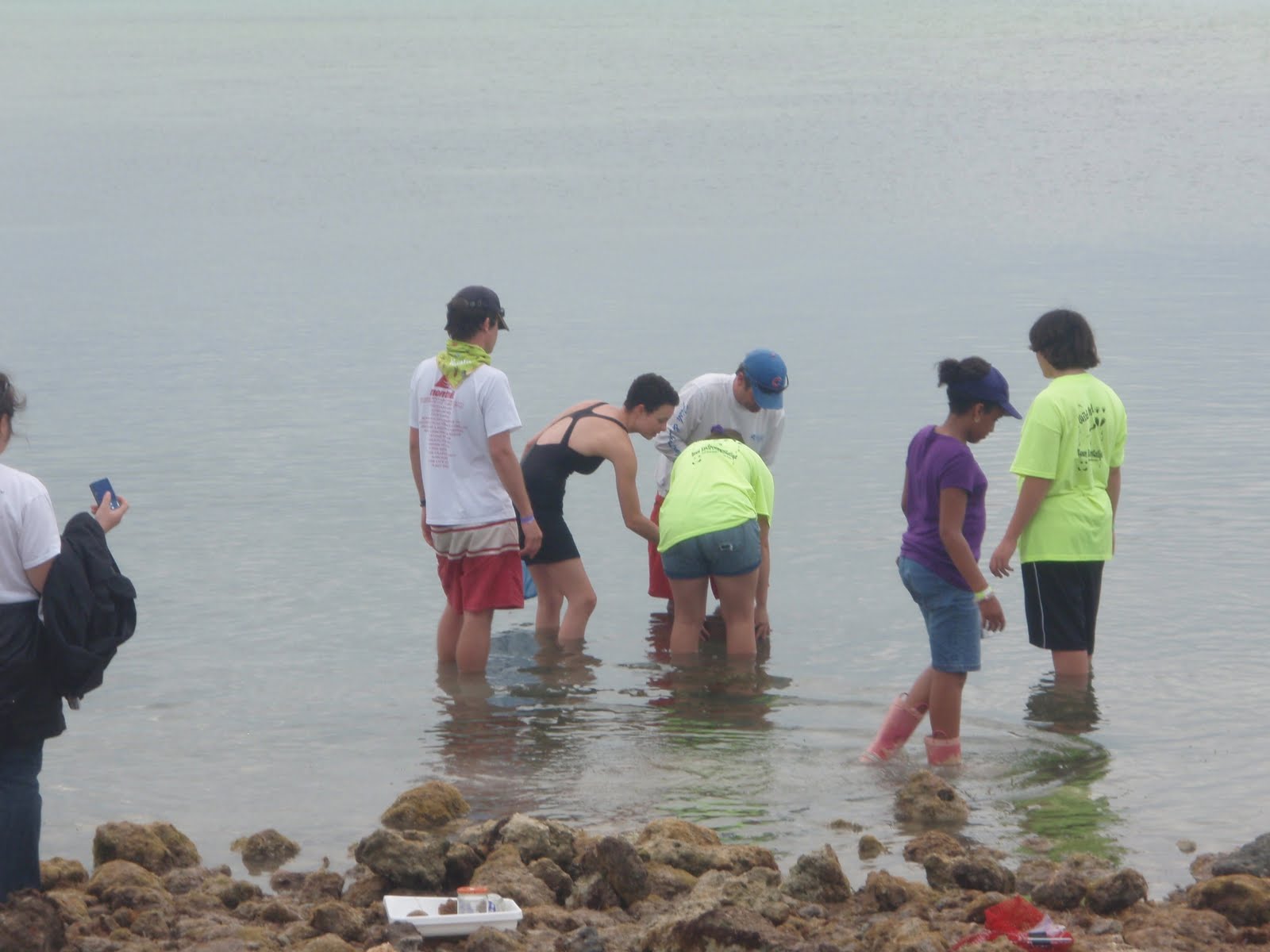
Unfortunately I also don’t have any pictures of John braving the wooded areas searching for land snails. Except for my sprints through The Gauntlet necessitated by some desperate need (food, sleep, more bug spray), I avoided the woods whenever possible.
Throughout the day, groups would come in from collecting trips and some animals would be displayed in trays on outside tables so that people could admire them. A group of us would man the tables to tell people about what they were looking at. For instance, dig this lobster.
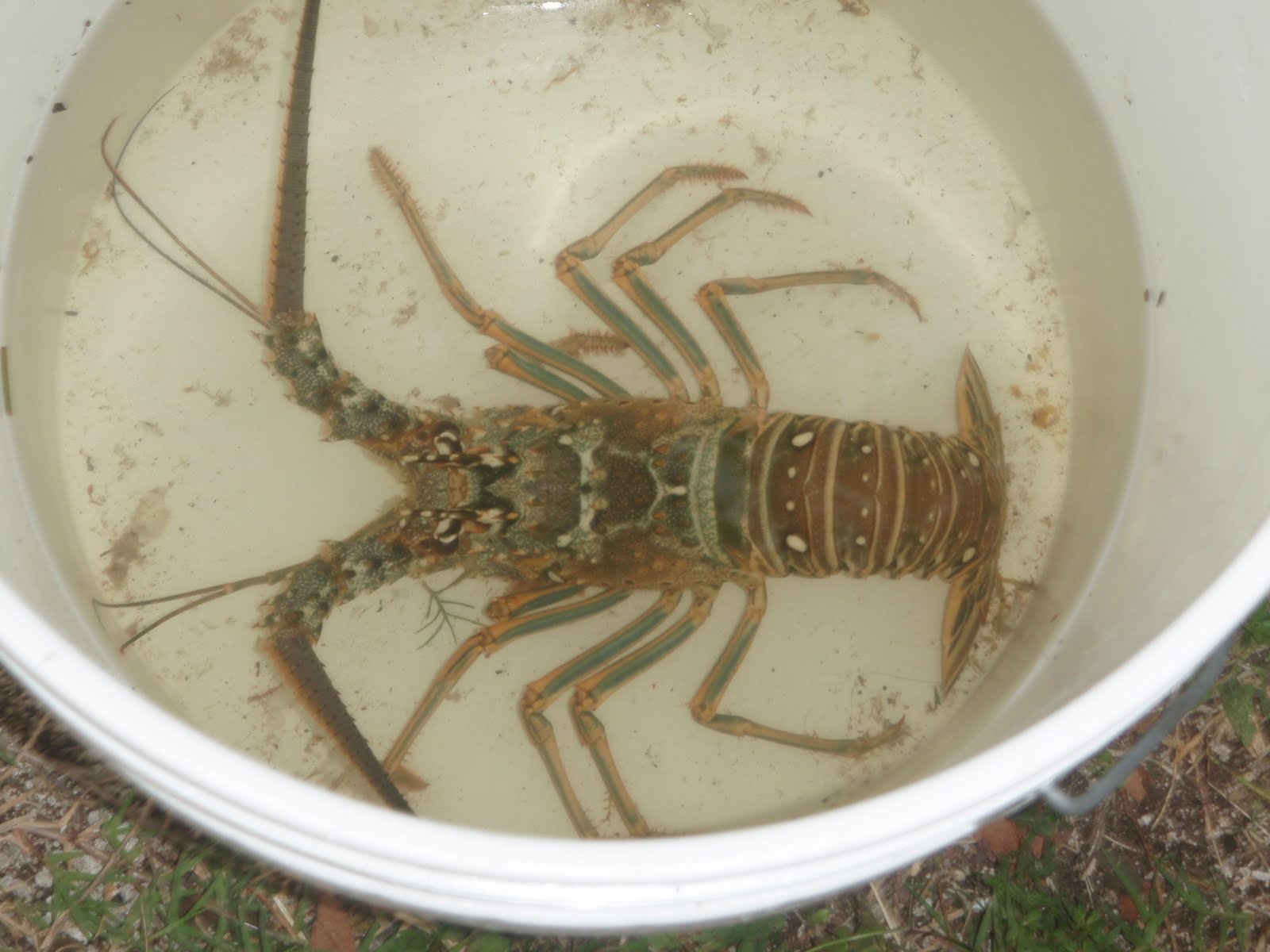
Now dig Jenna, Nat, Gustav, and François showing this group of children a thing or two about biodiversity.
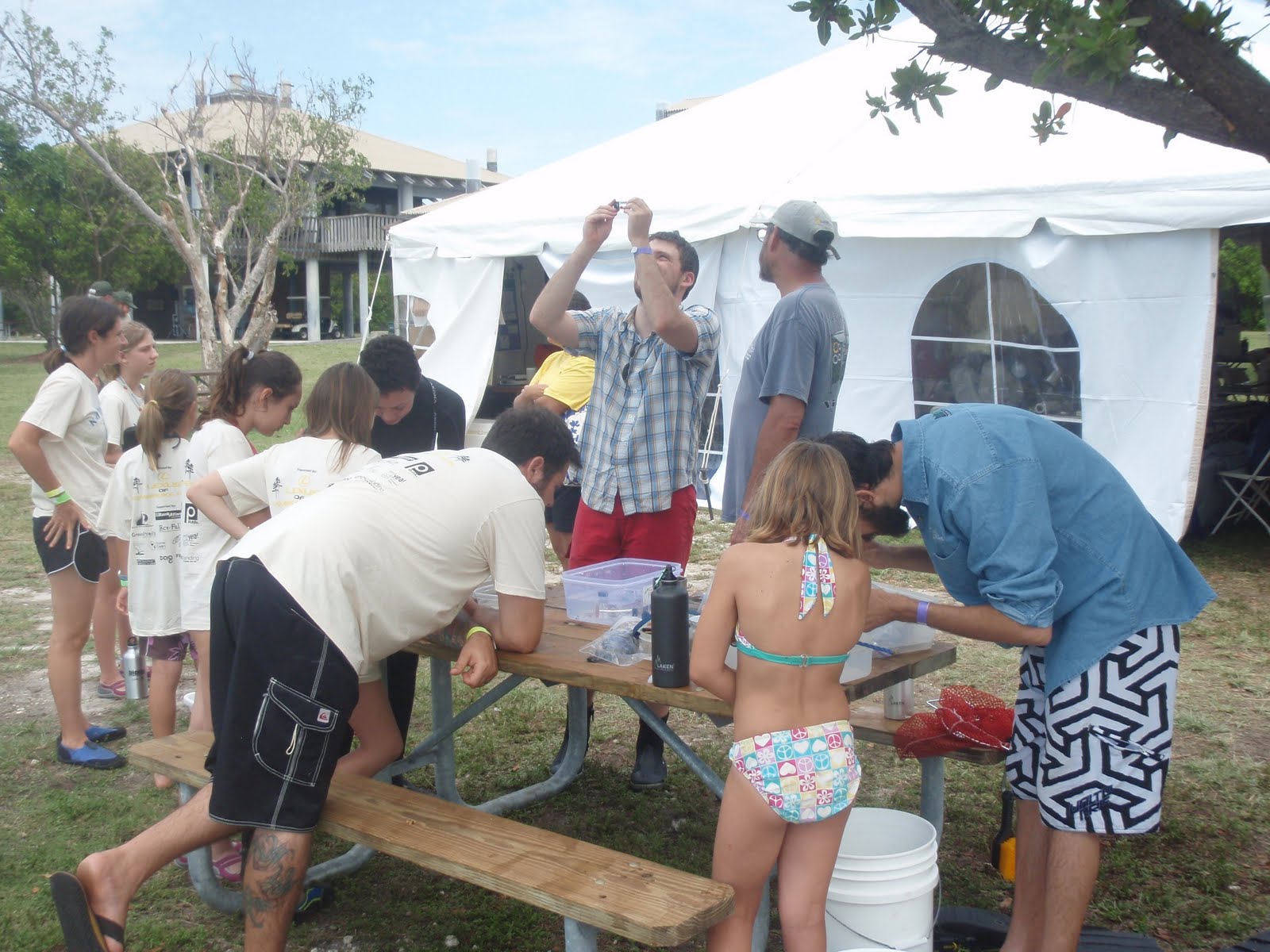
That tent in the background was the headquarters for this operation. Many animals were admired and released, but many also ended up in the tent where they were anesthetized. Then they were photographed, subsampled, and preserved to go back with us to the museum. Sarah is photographing, while Julie and Hsiu are subsampling.
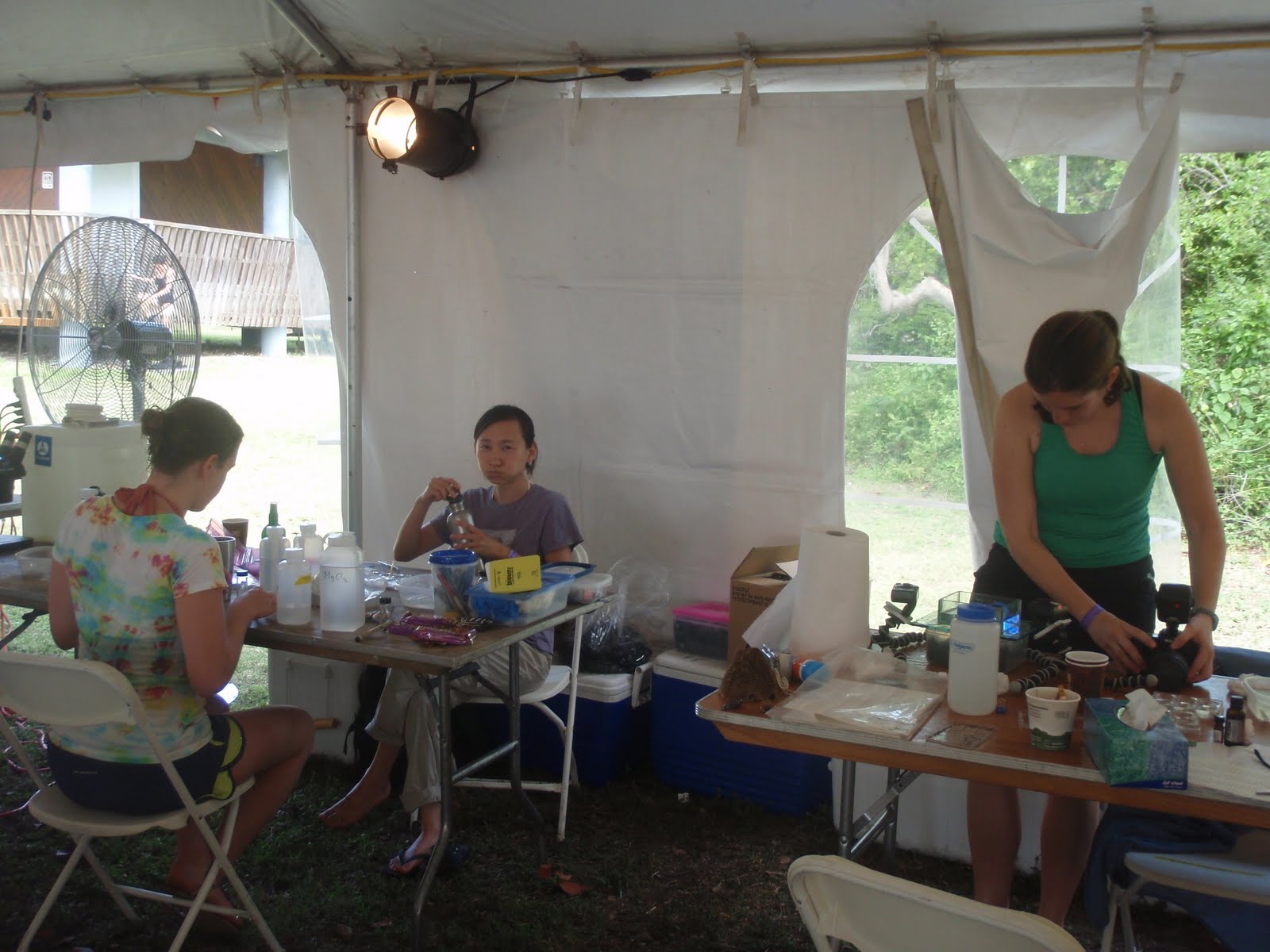
Having a physical specimen, accompanied by a live photo and DNA sequence, allow diversity information to be preserved in such a way that others can use it for their own research.
All in all it was a lot of work and a lot of fun, and we expanded our knowledge and collections of Florida’s biodiversity, but we weren’t done yet. After BioBlitzing most of us continued taking our show on the road and headed down to the Keys Marine Lab on Long Key. More on that in another post.